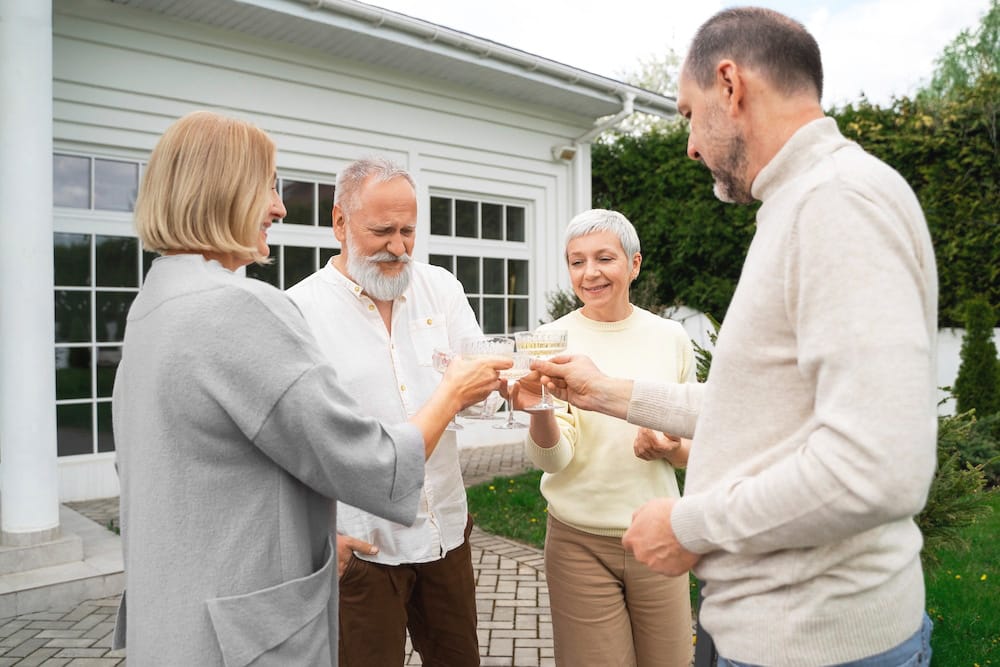Building friendships across different age groups is becoming more common. In a world where people of all ages mix more than ever, these bonds offer more than just companionship—they spark new ideas and fresh ways of thinking. When we connect with someone from a different generation, it opens doors to insights we might never have considered. These friendships aren’t just good for personal growth; they make communities stronger and more creative.
The Value of Age Diversity in Friendships
Understanding the Dynamics of Age-Varied Friendships
Friendships between younger and older people form naturally when shared interests or common goals bring people together. Sometimes, it’s a neighbor, a coworker, or a family member. Other times, it’s someone you meet through hobbies or community events. These relationships grow when both sides seek to learn from each other and see value beyond their own experiences.
Benefits of Age Diversity for Personal Development
When friends are from different generations, you gain empathy and a wider view of the world. Younger friends might teach you about new technology, while older friends share stories of their life lessons. This mix of experiences helps you develop better understanding of others and broadens your cultural awareness. It’s like viewing the world through a bigger, richer lens.
Societal and Cultural Impact of Intergenerational Friendships
Encouraging these friendships promotes inclusivity and challenges stereotypes. Communities that embrace cross-age bonds often see a rise in collaboration and innovation. For example, some towns have programs where seniors teach skills to youth, creating a cycle of learning and respect. These efforts build stronger, more tolerant societies that thrive on diversity.

How Different Age Groups Contribute Fresh Ideas
Young Adults: Innovation and Digital Savvy
Younger friends are often the first to spot new trends and tech tools. Their fresh ideas push boundaries in social media, fashion, and activism. Have you noticed how teens start viral challenges or create new startups? Their energy and digital skills inspire fresh ways to solve problems and reach new audiences.
Middle-Aged Adults: Experience and Problem-Solving
Middle-aged friends bring a wealth of work experience and practical wisdom. They often help solve problems with tested ideas. In workplaces, they mentor younger staff and introduce innovations based on years of lessons learned. Their input can turn creative sparks into tangible projects.
Seniors: Wisdom and Long-term Perspectives
Elder friends offer insights from a lifetime of experiences. They challenge conventional ways of thinking with long-term views. Many seniors get involved in community projects with innovative ideas that improve lives. Their patience and perspective help develop sustainable solutions to social issues.
Cross-Generational Collaboration: Combining Strengths
When these age groups work together, they create powerful collaborations. Think of successful community gardens or tech hubs run by diverse teams. To foster effective teamwork, encourage open dialogue, and recognize everyone’s contributions. Respect different viewpoints, and always look for ways to connect strengths.

Overcoming Challenges of Age-Diverse Friendships
Addressing Stereotypes and Age Bias
Some folks assume older adults are less tech-savvy or younger people lack wisdom. These biases aren’t true. Challenging stereotypes starts with open conversations and understanding. Show respect for each person’s unique skills and experiences, no matter their age.
Communication and Respect Across Generations
Good communication is key. Use clear language, listen actively, and be patient. Respect different perspectives, and avoid talking down to others. Sometimes, just asking questions and showing curiosity can build trust and understanding.
Balancing Different Life Stages and Priorities
Different ages come with different schedules and priorities. Staying connected might get tricky, but planning ahead helps. Be flexible, and remember that true friendship adapts over time. Sharing different interests can spark new activities everyone enjoys.

Encouraging and Cultivating Age-Diverse Friendships
Practical Steps to Build Cross-Generational Connections
Join community events, clubs, or volunteer work — places where people of all ages gather. Start conversations by asking about their experiences or hobbies. Small talk may lead to deeper bonds, and genuine curiosity makes friendships thrive.
Leveraging Technology to Bridge Age Gaps
Use social media, group chats, or video calls to stay connected. Younger friends can introduce seniors to helpful apps, while older friends can share stories from the past through digital formats. Keep communication respectful and avoid tech overwhelm.
Promoting Awareness and Opportunities in Schools and Workplaces
Schools and companies can create programs that encourage intergenerational dialogue. Mentorships, workshops, or team projects help break down barriers. Support organizations that promote these moments of shared learning and collaboration.

Conclusion
Age differences in friendships foster fresh ideas, creativity, and mutual growth. These relationships go beyond socializing—they challenge stereotypes, inspire innovation, and deepen understanding. Embracing these bonds can change how we see ourselves, others, and the world. If you ever feel hesitant, remember—intergenerational friendships might just be the key to a richer, more connected life. Start today, reach out, and find the wisdom and energy that different ages can bring to your social circle.
Also Read: Love Knows No Age: Exploring the Benefits of Dating Someone Older or Younger
Discover more from NoseyPepper
Subscribe to get the latest posts sent to your email.










Pingback : What Gets Better With Age and Why: Silver Lining of Growing Older